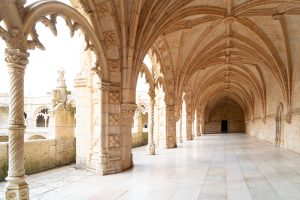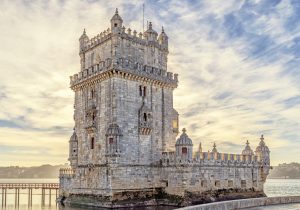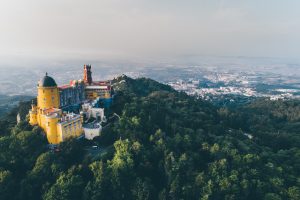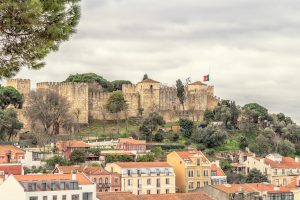Setúbal – Guide to the City
Table of Contents
- History of Setúbal
- Main Tourist Attractions
- Monuments and Architecture
- Culture and Social Life
- Practical Information
- Summary
History of Setúbal Setúbal is a city located on the southern coast of Portugal with a long and rich history. Its origins date back to the Phoenician and Roman times when it was an important trading port. In the Middle Ages, Setúbal developed as a fishing and commercial center. The city played a key role in Portuguese navigation and maritime exploration and became a center for salt production and fishing. Today, Setúbal is a dynamic city that blends its rich history with a modern lifestyle.
Main Tourist Attractions Setúbal offers many tourist attractions that will satisfy every visitor. Here are some of them:
- São Filipe Castle (Castelo de São Filipe): Located on a hill overlooking the city and bay, São Filipe Castle is an impressive 16th-century fortress. It not only offers beautiful views but also the chance to explore the historic walls and learn about the history of the place.
- Arrábida Natural Park (Parque Natural da Arrábida): This scenic park is one of the most beautiful nature reserves in Portugal. It features dense forests, white beaches, and rocky cliffs, making it a perfect spot for hiking, picnicking, and relaxing in nature.
- Troia Beaches: Just a short ferry ride from Setúbal, the Troia Peninsula offers some of the most beautiful beaches in Portugal. Crystal-clear waters and long sandy beaches attract tourists looking for sun and tranquility.
- Setúbal Archaeological Museum (Museu de Arqueologia e Etnografia do Distrito de Setúbal): This museum houses exhibits related to the region’s history, from prehistory to the medieval period. It includes Roman artifacts, ceramics, and tools used by Setúbal’s inhabitants over the centuries.
Monuments and Architecture Setúbal is a city full of interesting monuments and examples of diverse architecture:
- Convent of St. Sebastian (Convento de Jesus): This Gothic-Manueline convent from the 15th century is one of Setúbal’s most important landmarks. Built by architect Diogo Boitac, the convent delights visitors with its beautiful architectural details and valuable sacred artworks.
- Santa Maria da Graça Church: The main church of Setúbal, also known as Sé de Setúbal, was built in the Gothic style and boasts magnificent interiors. It is a vital place of worship for the locals.
- Rua Augusta: The main street of Setúbal runs through the heart of the city and is full of historic buildings, cafes, and shops. A stroll down this street allows you to experience the atmosphere of past times while blending with modern-day life.
Culture and Social Life Setúbal has a rich cultural tradition and vibrant social life. Numerous festivals, events, and gatherings take place here, attracting both locals and tourists:
- Sardine Festival (Festa de São Sebastião): A yearly event in June celebrating Setúbal’s fishing tradition. The festival features shows, sardine tastings, and outdoor concerts.
- Setúbal Music Festival (Festival de Música de Setúbal): This event draws music lovers from all over Portugal. It features classical, jazz, and contemporary music concerts, as well as workshops for young musicians.
- Museum Night (Noche de los Museos): Similar to other cities in Portugal, Setúbal organizes a Museum Night during which museums remain open late, offering special exhibits and attractions for visitors.
Practical Information Setúbal is easy to reach for tourists. Here are some practical tips:
- Getting There: Setúbal is well connected to Lisbon, which is about 50 km away. You can reach it by train or car. The city also has a port with ferry connections to the Troia Peninsula.
- Accommodation: Setúbal offers a wide range of accommodations, from luxury hotels to more affordable guesthouses and apartments. It is recommended to book your stay in advance, especially during the tourist season.
- Gastronomy: Setúbal is known for its excellent cuisine, especially seafood. A local delicacy is sardines, which can be enjoyed in many restaurants in the city. It is also worth trying the local wines, including the famous Muscatel from the Setúbal region.
- Weather: Setúbal has a mild Mediterranean climate, with warm summers and mild winters. The best time to visit is late spring or early autumn, when the temperatures are pleasant and the crowds are smaller.
Summary Setúbal is a city that captivates with its diverse attractions, rich history, and unique atmosphere. It is an ideal destination for nature lovers, beachgoers, and those interested in culture and good cuisine. Whether you plan a short visit or a longer stay, Setúbal has much to offer every visitor.




